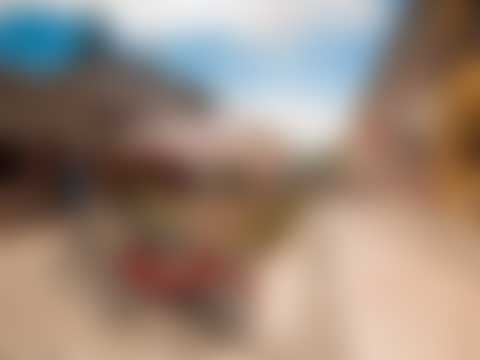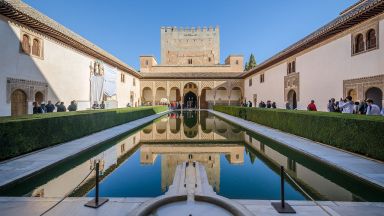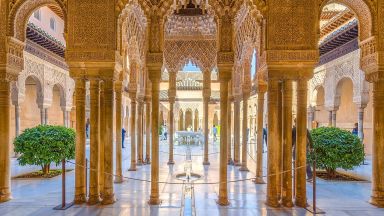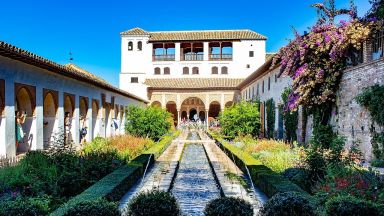Baño de la Mezquita
Baths in Granada
The Baño de la Mezquita or Bath of the Mosque is a moorish bath house in the Alhambra Complex, in Granada, Spain.
Where does the Baño de la Mezquita get is name?
It is known as the Baño de la Mezquita or Bath of the Mosque because it was associated with the main mosque of the palatine city, on whose site the church of Santa María de la Alhambra stands today. One of the Five Pillars of Islam is prayer. It is customary before praying to perform ablutions or cleansings, Mosques always provide a place to wash, but often hammams are located nearby for those who wish to perform deeper cleansing.
But it is also popularly called Baño del Polinario or Polinario Bath by the nickname of guitarist and singer Antonio Barrios, father of guitarist Ángel Barrios. This family lived from the 19th century in a neighboring house and managed a tavern installed in this bathroom. Said Polinario Tavern became a benchmark in the world of flamenco in Granada during the 1920s.
The History of the Baño de la Mezquita
The hamam or turkish bathhouse, is dated to the sultanate of Muhammad III (1302-1309) , who attributed his income to the maintenance of the Alhambra mosque. It has undergone numerous transformations and has been partially rebuilt in 1934 by Leopoldo Torres Balbás , then architect-curator of the Alhambra.
What would the Baño de la Mezquita have looked like?
The typology of the baths of the Alhambra largely follows the scheme of the others in Granada and took its basic structure from the Roman baths. They were supplied with a ditch or cistern that provided them with the necessary water flow and split into the following area:
- Al-bayt al-maslaj, accessed from the street, is a room that served as a hall, wardrobe or dressing room. It was the anteroom to the bathroom and here the users took off their clothes and received: towels, soap, sponge, wooden stilts so as not to burn their feet and a couple of wooden buckets. Sometimes, after bathing, it was used as a resting and gathering room.
- The bayt al-barid or cold room was intended for rest and preparation for bathing and for the acclimatization of bathers before leaving the building.
- Al-bayt al-wastani or warm room. It was the largest, and the main room of the room.
- Al-bayt al-sajun or hot room. In this room the hot water baths were received, in it the heat was obtained through a radiant floor. Beneath the hot room was a hidden combustion chamber, in which wood was poured, which heated the floor of the room. The woodshed room is where the boiler and fuel store was located.
To control the vapor density, the bathroom workers lowered and raised the crystals that covered the star-shaped skylights or polygons that opened in the vaults of the rooms.
The care and cleaning of the bathrooms were carried out by guardians and waiters, many of them were slaves, and there were also masseurs, and makeup artists who used musk, henna, kohol and genna, for important parties and ceremonies.
In the public bathroom of the Alhambra, use was alternated between men and women: men in the morning and women in the afternoon. For Islamic women, this public space was one of the few places of meeting and freedom.
Where is the Baño de la Mezquita located?
The mosque was located on the site that today occupies the church of Santa María de la Alhambra . The public bath of the mosque is partially preserved next to the house No. 47 on Calle Real.
Other Hamam in the Alhambra complex
There would have been other public baths or Hammans in the Alhambra. This one would have been for Nasrid courtiers and visitors to the main mosque. There are the remains of one found in the Plaza de las Armas in the Alcazaba for the use of soldiers. The Alhambra also had several private baths inside the palaces, such as: the baths in the high palace of the Partal, that of the Abencerrajes palace, that of the ex – convent of San Francisco, or that of the Alife palace of the Generalife.
The Baño de la Mezquita appears in our Complete Guide to Visiting Granada!
This website uses affiliate links which may earn a commission at no additional cost to you!
Visiting Baño de la Mezquita
Monday to Sunday from 8:30 a.m. to 8 p.m. (from March 15 to October 14) and from 8:30 a.m. to 6 p.m. (from October 15 to March 14)
Free
Nearby Attractions
- Angel Barrios Museum (0.0) km
Museum in Granada - Church of Santa María de La Encarnación (0.0) km
Church in Granada - Puerta de los Carros (0.0) km
City Gate in Granada - Camino de Ronda (0.1) km
Street in Granada - Torre de las Abencerrajes (0.1) km
Tower in Granada - Alhambra Complex (0.1) km
Castle, Gardens, Notable Building and Palace in Granada - Sala de los Abencerrajes (0.1) km
Historic Room in Granada - Torre de la Rauda (0.1) km
Tower in Granada - Palacio de Yusuf III (0.1) km
Gardens and Palace in Granada - Sala de los Reyes (0.1) km
Historic Room in Granada



